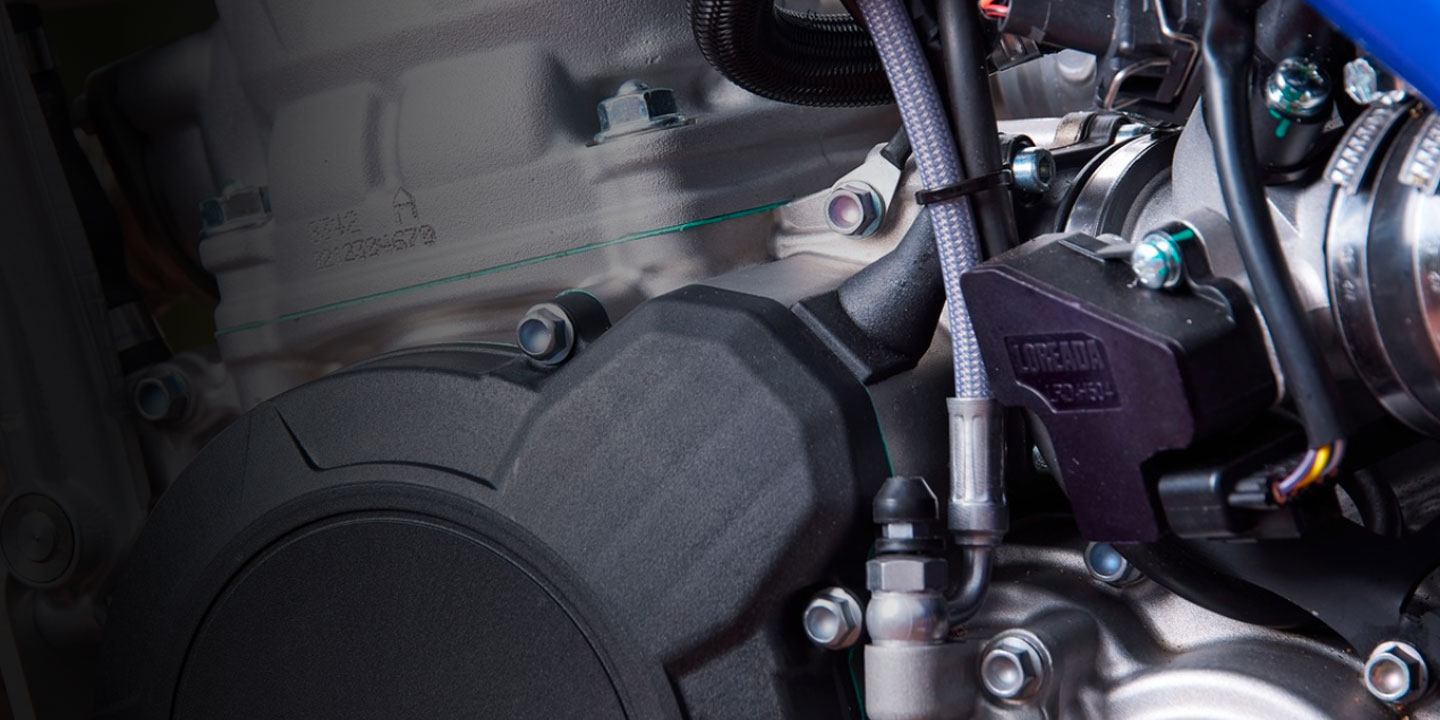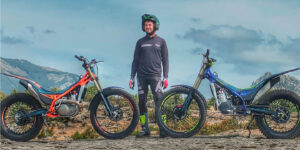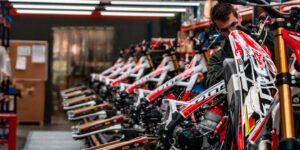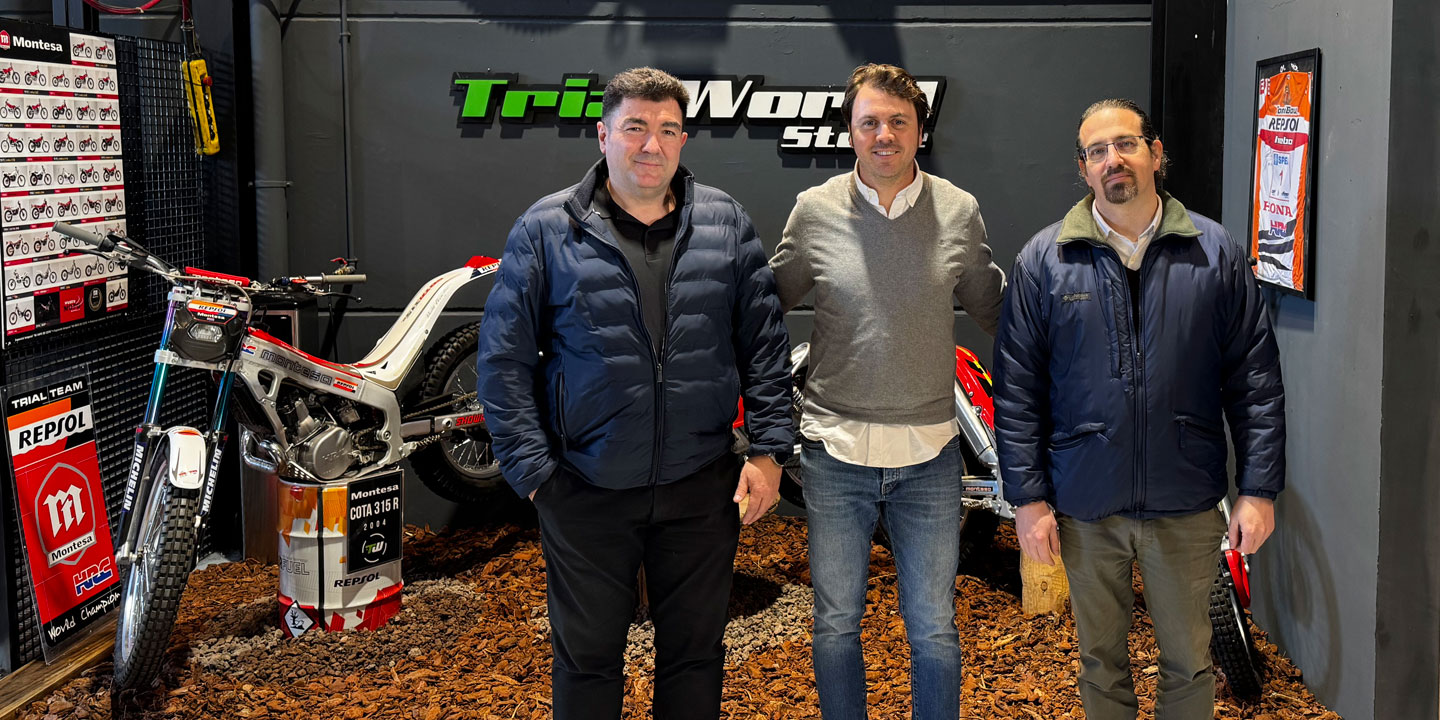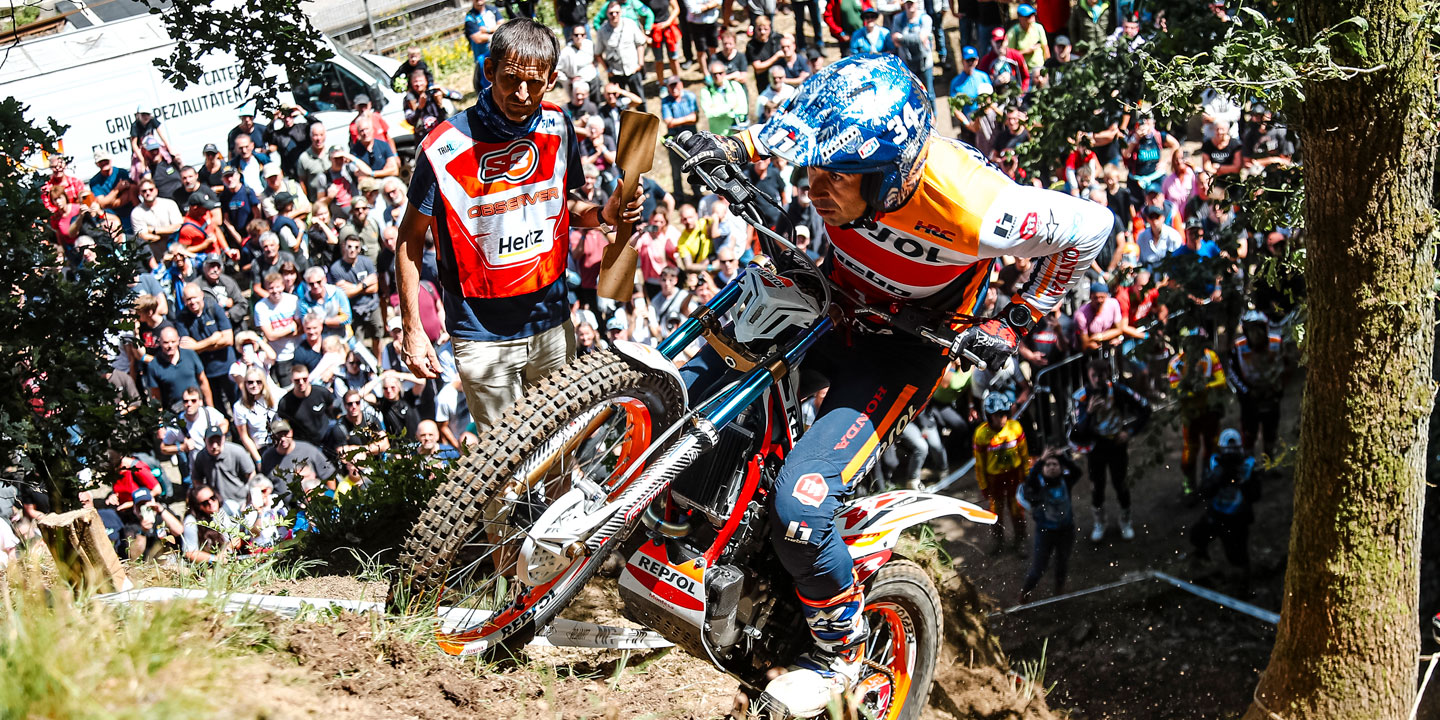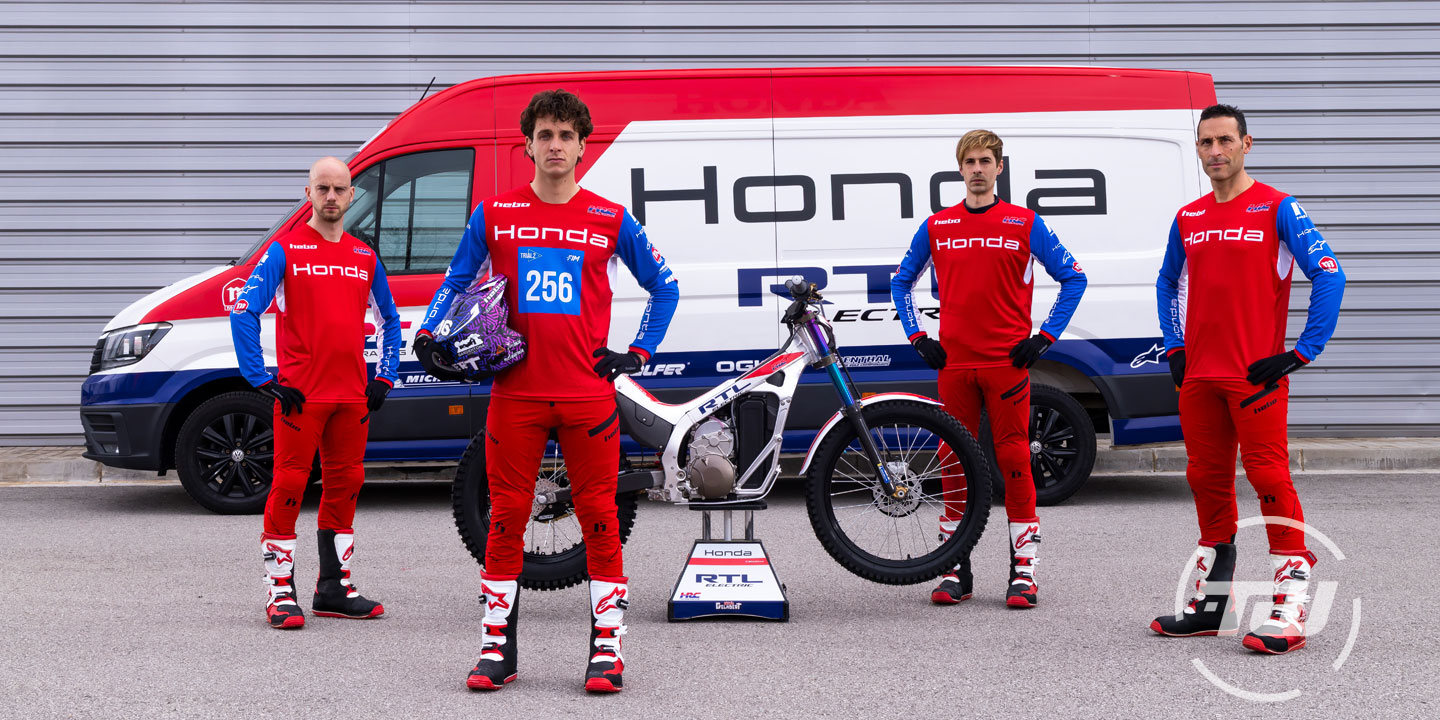LISTEN TO PODCASTS
Technologically, we are facing a critical moment in the history of trial. The evolutionary dynamics of this sector are relatively slow due to the limited size of the market, so that the fans themselves are, on many occasions, the ones who view the big changes with scepticism and prudence. On this occasion we are going to talk about electronic injection on the trial bike, and for this we are going to rely on Sam Xiberta, Sherco’s technical manager and one of the fathers of the new engine injection system that Sherco has released in 2023.
Before getting into the matter, there is an empirical fact that we have contrasted at Trialworld, and that is that, as we said, the trial fan finds it difficult to break that psychological barrier of the traditional to bet on the innovative. We can call it respect for reliability, lack of technical knowledge, concern for its maintenance or the autonomy of the owner to solve any problem. The fact is that, normally, we still prefer the traditional carburetor to the injection technology.
However, do we know what benefits an electronic injection system brings to the trial bike?
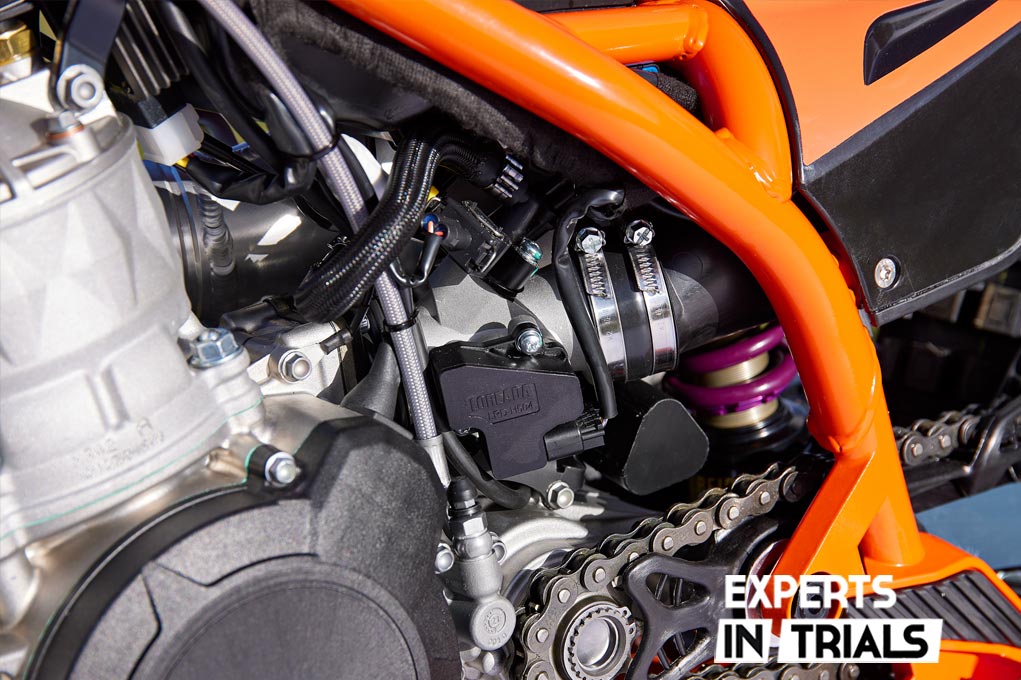
HOW ELECTRONIC INJECTION WORKS IN TRIALS
The injection system works in coordination with other elements, providing precision, intelligence and the ability to adapt to the environment based on different variables.
Unlike the carburetor, the first thing you need is a Fuel pump in the fuel tank to be able to inject gasoline into the unit with the proper pressure, also taking into account the following parameters as a minimum: intake pressure, atmospheric pressure, intake air, engine temperature, and throttle opening position.
All this information allows the electronic control unit (ECU) to be able to indicate with extreme precision what the electronic injection should do at all times, achieving real-time adaptation to the atmospheric context and the pilot’s demand.
With the carburetor, on the other hand, we perform a set-up within a specific context and maintain it throughout the range of use, which explains the performance instability depending on altitude or other parameters. That work that we do of adjustment with the modification of chewing gum, is now done by sensors.
Tutorial: this is how to carburete a trial bike
BATTERY YES, BATTERY NO
In the video that you have inside this article, Sam explains very well why we need a battery to assist with electronic injection. Today, all injection-fueled two-stroke trial bikes are powered by a small lithium battery , weighing no more than 300 grams. This battery is continuously recharged while the bike is in operation thanks to the alternator.
For example, until the 2022 edition, Vertigo used a batteryless system, but the entire current Nitro range already works with battery, as well as the new Scorpa and Sherco.
In the case of the Montesa Cota 4RT, four-stroke, it does not use a battery to power the electronic injection system.
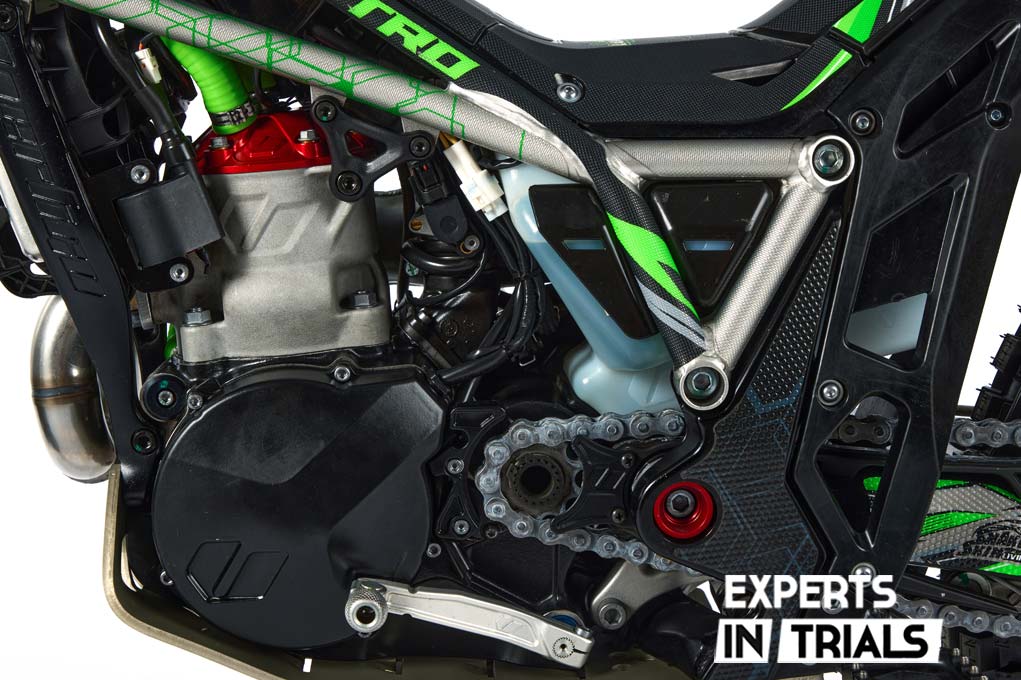
MAINTENANCE OF ELECTRONIC INJECTION IN TRIALS
The reality is that the maintenance of electronic injection is much lower than that of the carburetor. It does not require intervention on the injection body with a certain periodicity, but it can be disassembled to carry out a cleaning when needed, for example, after a day with a lot of mud or water has entered the bike for any reason.
It is interesting to keep the body of the butterfly clean where the throttle acts.
FINE-TUNING OF ELECTRONIC INJECTION IN TRIALS
Technology gives us a wide range of customization. Brands, out of prudence and performance control, delegate to dealers the options for customizing power maps and injection system updates .
There are systems, such as Vertigo’s Wi-Ficom, that do allow you to parameterize some aspects of the motorcycle via APP, always within a maximum range. In the case of Sherco and Scorpa, they allow the user to act on idle, but only in a range of about 100rpm up or down, thus avoiding the need to do the “zero TPS” or reset of the system.
The constant evolution of these injection systems will mean that older motorcycles can be updated in terms of performance, detect faults much more accurately, as they will be recorded and will allow us to understand where we must act or replace. This is something we already see in every car today.
HOMOLOGATION AND FUTURE
According to experts, there is a clear premise: the carburetor will not be able to pass Euro5+ or Euro6 regulations. This leaves two alternatives for the market to enjoy homologated trial bikes; the first, the electronic injection systems that we are discussing in this report, and the second, the electric propulsion motors.
There are no trial brands that do not have the use of electronic injection in their current or short-term projects, something that favors the rapid evolution of the system in our segment. The more bikes rolling, the more information. The more brands working with injection, the more weight for evolution in terms of performance and technical possibilities.
CURRENT TRIAL BIKES WITH ELECTRONIC INJECTION
- Vertigo Nitro
- Sherco STR
- Scorpa SCT
- Montesa Cota 4RT
- Montesa 4 Ride
